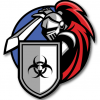My system has been running slower and I hear frequent disk activity, sometimes for many minutes at a time. I have not had a BSOD but twice, once yesterday and once today, my screen went black. When I moved the mouse to see if I could get it back, I could see the cursor, but the screen would not come back. The cursor would move slowly as well. I had to do a hard boot both times. I have Malwarebytes installed and I have run a scan and it shows no infection. I also have Spybot S&D installed. I've tried looking on task manager and usually it is superfetch that is consuming resources. Also, I don't know if this is normal but opening one browser window with Microsoft Edge uses about 310 mb of memory. My email client is Mozilla Thunderbird which has been freezing as well. This morning I came in and had a blue screen so I did a hard reboot. I'm not sure where to go from here. Can anyone help?

















 Sign In
Sign In Create Account
Create Account

